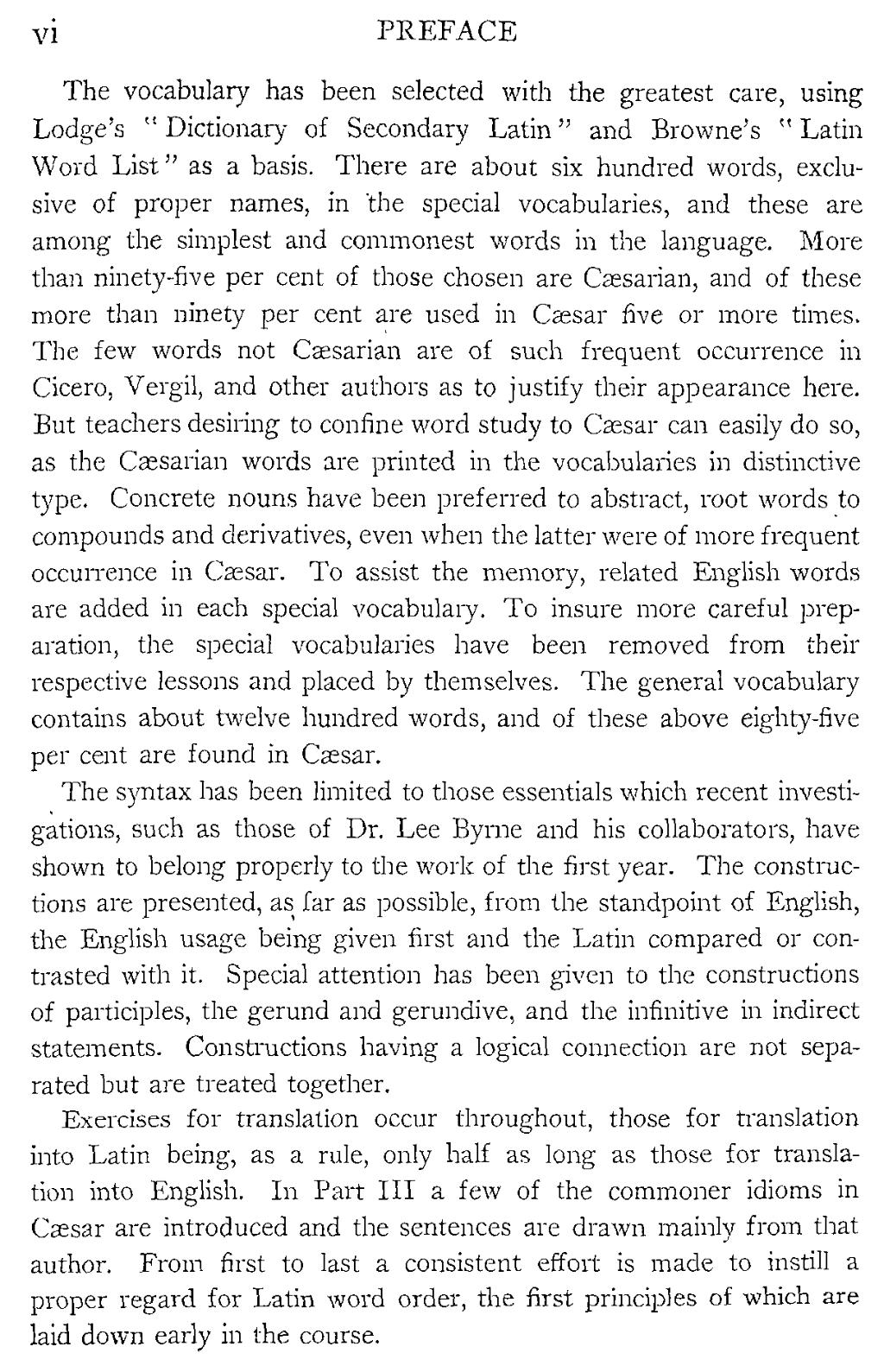The vocabulary has been selected with the greatest care, using Lodge’s “Dictionary of Secondary Latin” and Browne’s “Latin Word List” as a basis. There are about six hundred words, exclusive of proper names, in the special vocabularies, and these are among the simplest and commonest words in the language. More than ninety-five per cent of those chosen are Cæsarian, and of these more than ninety per cent are used in Cæsar five or more times. The few words not Cæsarian are of such frequent occurrence in Cicero, Vergil, and other authors as to justify their appearance here. But teachers desiring to confine word study to Cæsar can easily do so, as the Cæsarian words are printed in the vocabularies in distinctive type. Concrete nouns have been preferred to abstract, root words to compounds and derivatives, even when the latter were of more frequent occurrence in Cæsar. To assist the memory, related English words are added in each special vocabulary. To insure more careful preparation, the special vocabularies have been removed from their respective lessons and placed by themselves. The general vocabulary contains about twelve hundred words, and of these above eighty-five per cent are found in Cæsar.
The syntax has been limited to those essentials which recent investigations, such as those of Dr. Lee Byrne and his collaborators, have shown to belong properly to the work of the first year. The constructions are presented, as far as possible, from the standpoint of English, the English usage being given first and the Latin compared or contrasted with it. Special attention has been given to the constructions of participles, the gerund and gerundive, and the infinitive in indirect statements. Constructions having a logical connection are not separated but are treated together.
Exercises for translation occur throughout, those for translation into Latin being, as a rule, only half as long as those for translation into English. In Part III a few of the commoner idioms in Cæsar are introduced and the sentences are drawn mainly from that author. From first to last a consistent effort is made to instill a proper regard for Latin word order, the first principles of which are laid down early in the course.
